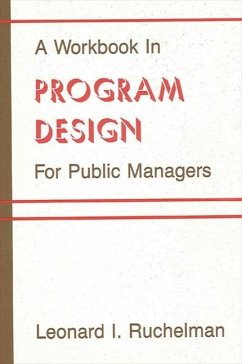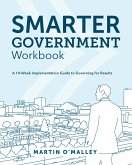This is the first practical, step-by-step guide to a key management technique-the design of efficient, cost-effective programs. With social programs succumbing to the pressures of budgetary cutbacks and taxpayer opposition, it gives public administrators the skills to design programs that will endure even as resources decline. The author begins to bridge the gap between what is needed by society and what can be provided by government by assisting public managers in identifying and surmounting obstacles in the way of program change. He does so by synthesizing what is known about program planning as a body of knowledge with the application of programs under real life conditions. His how-to approach covers such tasks as selecting a problem for analysis, diagnosing the organizational setting, preparing a work plan, developing alternatives, collecting data, communicating results, and preparing for implementation. The exercises and exhibits included in this workbook are applicable to all areas of public service, including health and human services, social services, criminal justice, and education.
Bitte wählen Sie Ihr Anliegen aus.
Rechnungen
Retourenschein anfordern
Bestellstatus
Storno








